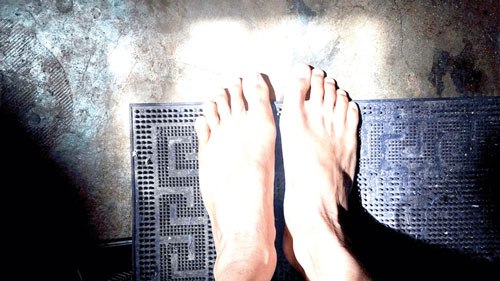Plantar fasciitis is one of the most common causes of foot pain. Current treatments for persistent plantar fasciitis include steroid injections or surgery, which may have side effects. A small study has found that injections of fat into the sole of the foot decrease pain and improve function. Plans are in place for large-scale studies to verify these promising findings.
Many people experience foot and heel pain during their lifetime. And for about 80% of them, plantar fasciitis is the cause. Plantar fasciitis is caused by inflammation or damage to the connective tissue — the plantar fasciaTrusted Source — that runs along the sole of the foot. Females, older individuals, and people with obesityTrusted Source or overweight are most likely to suffer from the condition. However, it can also affect people who do regular, high-impact exercise, such as running. “Plantar fasciitis is probably the most common foot condition that adults present with in the United States. While there are a number of potential therapies that have been successful, none are universally so.”
For most people, exercises, orthotics, and night splints will resolve the problem within a year. How-ever, for some, it can become a chronic condition, known as plantar fasciosisTrusted Source. The plan-tar fascia thickens, and collagen deteriorates. People can have surgery to release the tension in the plantar fascia or steroid injections. “Steroid injections tend to provide only temporary relief and also come with the potential side effect of weakening the plantar fascia, exposing it to a higher likelihood of rupture. And needless to say, there is a multitude of side effects with surgery, as well. Thus, the proposition of a safe alternative is quite exciting.”
Now, a team from the University of Pittsburgh, PA, has developed such a treatment for chronic plantar fasciitis. The study, which appears in the Journal of the American Society of Plastic Surgeons, suggests that fat injections in the sole of the foot can relieve pain and improve function. In this small study, the researchers injected fat, under local anesthesia, into the sole of the participant’s foot. They took the fat from the person’s belly or elsewhere in their body.
They used a blunt needle to perforate the fascia in several places, injecting 0.1 milliliters (ml) of the person’s fat as the needle was withdrawn. Most participants were injected with a total of just over 3 ml of fat. The researchers divided the 14 participants into two groups for the 12-month study. One group had the fat injections at the start of the study, and the other used night splints and arch supports for 6 months before receiving the fat injections.










